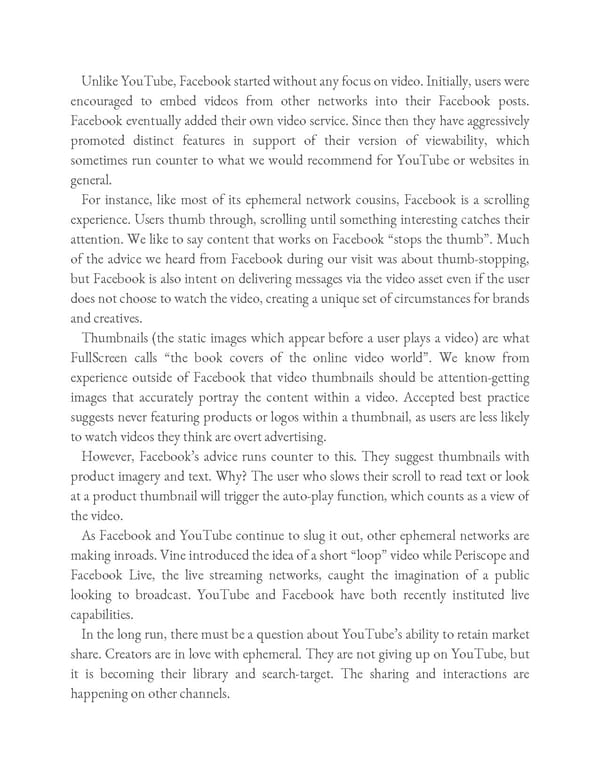Unlike YouTube, Facebook started without any focus on video. Initially, users were encouraged to embed videos from other networks into their Facebook posts. Facebook eventually added their own video service. Since then they have aggressively promoted distinct features in support of their version of viewability, which sometimes run counter to what we would recommend for YouTube or websites in general. For instance, like most of its ephemeral network cousins, Facebook is a scrolling experience. Users thumb through, scrolling until something interesting catches their attention. We like to say content that works on Facebook “stops the thumb”. Much of the advice we heard from Facebook during our visit was about thumb-stopping, but Facebook is also intent on delivering messages via the video asset even if the user does not choose to watch the video, creating a unique set of circumstances for brands and creatives. Thumbnails (the static images which appear before a user plays a video) are what FullScreen calls “the book covers of the online video world”. We know from experience outside of Facebook that video thumbnails should be attention-getting images that accurately portray the content within a video. Accepted best practice suggests never featuring products or logos within a thumbnail, as users are less likely to watch videos they think are overt advertising. However, Facebook’s advice runs counter to this. They suggest thumbnails with product imagery and text. Why? The user who slows their scroll to read text or look at a product thumbnail will trigger the auto-play function, which counts as a view of the video. As Facebook and YouTube continue to slug it out, other ephemeral networks are making inroads. Vine introduced the idea of a short “loop” video while Periscope and Facebook Live, the live streaming networks, caught the imagination of a public looking to broadcast. YouTube and Facebook have both recently instituted live capabilities. In the long run, there must be a question about YouTube’s ability to retain market share. Creators are in love with ephemeral. They are not giving up on YouTube, but it is becoming their library and search-target. The sharing and interactions are happening on other channels.
 Ogilvy on Advertising in the Digital Age Page 79 Page 81
Ogilvy on Advertising in the Digital Age Page 79 Page 81